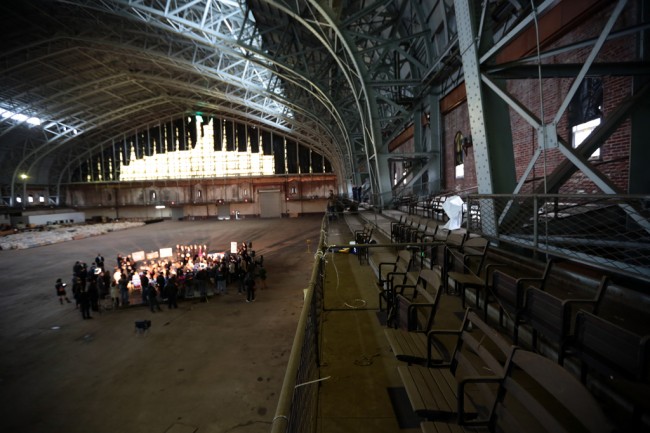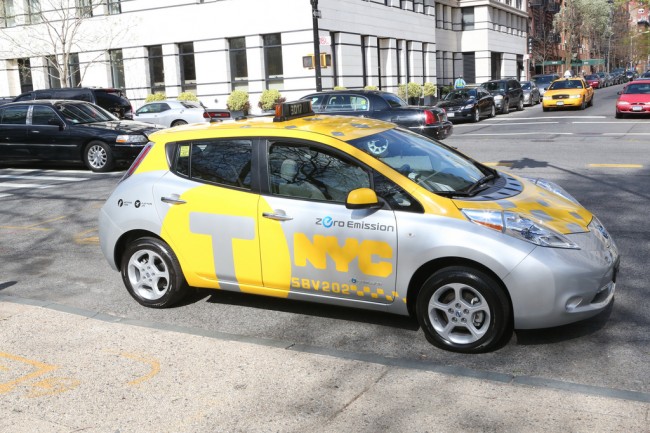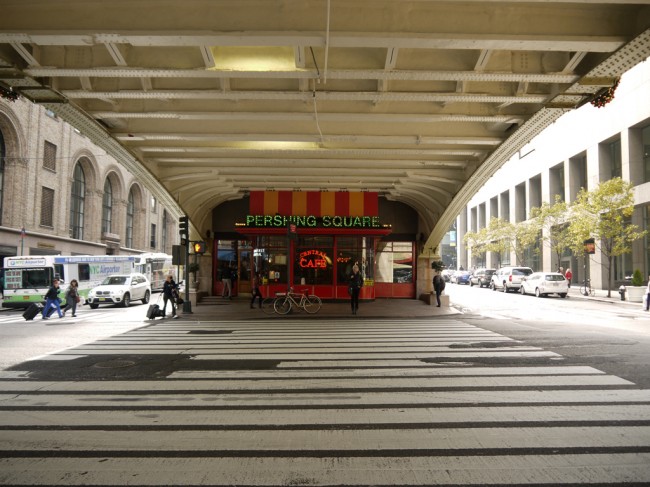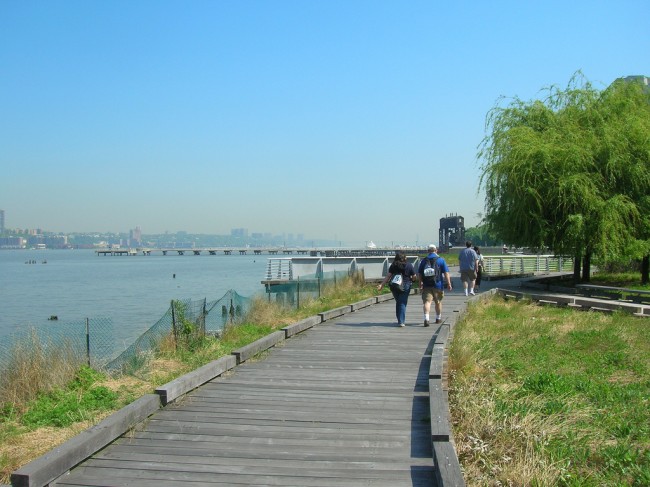
We are celebrating 15 years — and counting — of stories that are deeply researched and deeply felt, that build a historical record of what the city has been.
We are celebrating 15 years — and counting — of stories that are deeply researched and deeply felt, that build a historical record of what the city has been.

The drill shed at the Kingsbridge Armory, to be transformed into the Kingsbridge National Ice Center | Photo: Edward Reed, via NYC Mayor’s Office
ARMORY ON ICE
The massive Kingsbridge Armory in the Bronx is one step closer to becoming the world’s largest indoor ice center after an agreement was reached between the City and developer KNIC Partners, subject only to further approval by the City Council. KNIC’s plan, to be built with private funds (and a generous lease of one dollar per year from the City, which hopes to bring jobs to the area), calls for nine regulation-size skating and hockey rinks and a 5,000-seat arena. Numerous redevelopment proposals for the 750,000-square-foot space have failed in the past, even as the City has invested $30 million in cleanup and repairs. The plan was selected from a group of five by the City’s Economic Development Corporation and includes an agreement with a coalition of community groups to pay a living wage, give hiring preference for Bronx residents, and reserve 50,000 square feet of space for community use. Some residents have reacted with skepticism over its benefit to the community: “You’ll have so many people competing for those jobs, it will be like winning a raffle,” said one Bronx resident.
SLOWING DOWN AT HUDSON YARDS
Rather than wait for the MTA to fund the 7 line extension to the Far West Side, the City agreed to pick up the tab for the extension relying on anticipated tax revenue generated by new development at Hudson Yards. Now, development is failing to meet expectations, and the City has shelled out more money to meet interest payments than initially predicted: $137 million between 2006 and 2012 with another $125 million slated for payments in 2013, according to a report by the NYC Independent Budget Office. Some officials have questioned if proposed rezoning of East Midtown could deter tenants from leasing in the new Hudson Yards development, thereby prolonging the problem. Second Avenue Saga’s Benjamin Kabak argues that these concerns are premature given the history of transit and development; while Stephen Jacob Smith at The New York Observer speculates that the slow pace of commercial development stems from the fact that the area will only be served by one subway line while other commercial districts benefit from redundant service, and that developers are increasingly moving towards residential development less dependent on convenient transit access.

One of the city’s new, all-electric, taxi cabs | Photo: Spencer T Tucker, via NYC Mayor’s Office
TAXIS OF THE FUTURE, NOW
While the so-called Taxi of the Future will not be rolled out for another few months (and leaves many disappointed with its green credentials), the City has launched a one-year pilot program of six all-electric Nissan LEAF taxis as a forerunner to its goal of making one third of the city’s cabs electric by 2020 — taxis that New Yorkers will be able to hail electronically now that a judge has ruled that a pilot program of taxi-hailing smartphone apps in the city can proceed. The program was initially halted after an organization representing livery cars brought a lawsuit alleging use of the apps would allow drivers to more easily refuse fares, discriminate against older riders without smartphones, and violate the existing ban on pre-arranged taxi rides.
TURNSTYLING
The MTA releases weekly subway ridership in a rather unfriendly format, but thanks to data visualizers like Chris Whong, this data is increasingly being adapted for the eyes of those of us less savvy with spreadsheets and code. Check out the video above for an animation of the city’s subway turnstile data over the course of a week with green dots showing appoximately 50 people entering a station and red dots showing approximately 50 people exiting.
CONNECTED TRAINS
The number of subway stations with wireless services expanded from 6 to 36 on Thursday under a partnership between the MTA and Transit Wireless. The rollout is the next step toward the goal of having all 277 stations connected by 2018, a project that will be funded by Transit Wireless and cell phone carriers.

42nd and Park Avenue looking south – the southbound stretch of Park between 42nd and 41st (right) is set to become a public plaza. | Image via Keith Survell
A NEW PERSHING SQUARE
27 years after a similar plan was proposed by the Grand Central Partnership, the underused southbound stretch of Park Avenue that rises up from the main entrance to Grand Central Terminal between 42nd and 41st streets is slated to become a public plaza, with shallow terraces of asphalt, concrete pavers, and granite curbs and steps. One of the terraces will accomodate an outdoor space for the Pershing Square restaurant, which already takes over part of the roadbed for an outdoor cafe from April through October.
COSTLY SANDY DEBRIS
As with your everyday trash, the approximately one million cubic yards of debris collected in the aftermath of Hurricane Sandy did not simply disappear: it was taken out of the city by the Army Corps of Engineers under contract with the City. The price of this service has come under scrutiny for its heftiness: at $177 million, the service cost approximately twice the amount per cubic yard as in other national disaster cleanups, which the Corps attributes to the complexities of waste disposal in urban areas, attempts to reduce truck traffic by favoring barges for transport, and efforts to recycle debris including returning sand to depleted beaches and reclaiming wood from destroyed boardwalks. New Jersey, under a contract with a private hauling company from Florida, paid about $50 per cubic yard versus New York City’s $100. The Corps responded that their ability to deploy hundreds of trucks and barges helped the city return to normal more quickly. Col. John Pilot, who supervised the debris cleaning effort, defended the service by saying, “Some people think the Corps is expensive, but when you see what we bring to the table, we really are not… We do it right.”

Great Saunterers in 2010 | Image via Julie Lyn
EVENTS AND STUFF TO DO
THE GREAT SAUNTER
Join Shorewalkers — a nonprofit group committed to preserving and enhancing the parks and promenades along the region’s shores — on Saturday, May 4th, for the 28th Annual Great Saunter, a 32-mile stroll along the entirety of Manhattan’s shoreline (the accessible parts at least). The walk begins at South Street Seaport at 7am, though everyone is encouraged to join at any point and walk some or all of it. Registration for non-Shorewalker members is $20. Happy sauntering!
EMERGING FROM THE RUINS
In the ninth installment of an annual lecture honoring Lewis Mumford, philosopher and urbanist Marshall Berman will examine how urban creativity emerges from urban disaster and disintegration in a lecture entitled “Emerging from the Ruins” on Thursday, May 2nd, at 6:30pm. The talk is free and open to the public.
AT THE LEAGUE
And don’t forget about what’s happening at the League next week: on Monday, April 29th, at 7pm, photographer Mitch Esptein will speak about his latest work, New York Arbor; followed by a whole host of happenings at the IDEAS CITY Festival — a conference, workshops, and Streetfest – taking place May 1st through 4th!
The Roundup keeps you up to date with topics we’ve featured and other things we think are worth knowing about.
The views expressed here are those of the authors only and do not reflect the position of The Architectural League of New York.